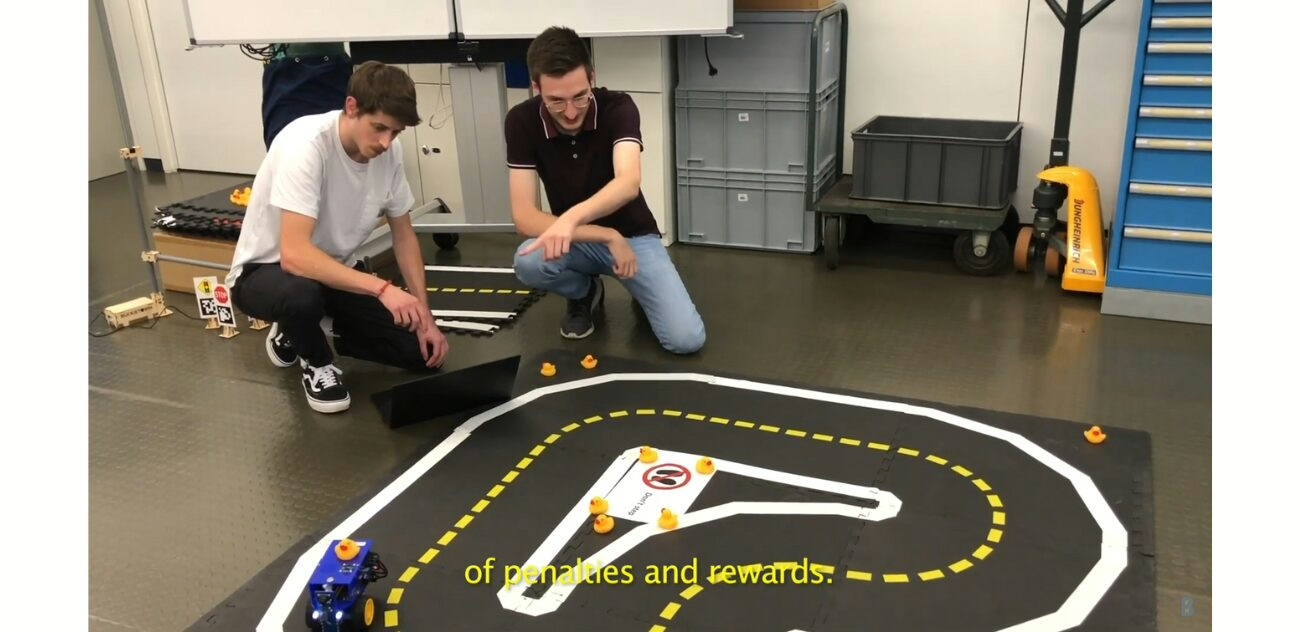Reinforcement Learning for the Control of Autonomous Robots
Project Resources
- Objective: Develop and evaluate reinforcement learning (RL) techniques for safe and autonomous navigation in any Duckietown
- Approach: Develop, train and test RL algorithms including Deep Q-Networks (DQN), Deep Deterministic Policy Gradient (DDPG), and Proximal Policy Optimization (PPO), for autonomous lane-keeping and obstacle detection on a DB21 Duckiebot.
- Authors: Bruno Fournier, Sébastien Biner
RL on Duckiebots - Project highlights
Here is a visual tour of the authors’ work on implementing reinforcement learning in Duckietown.
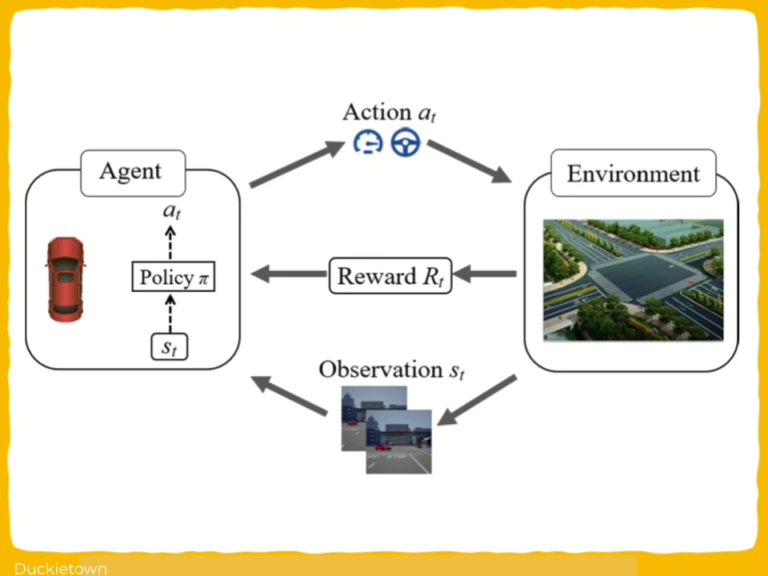
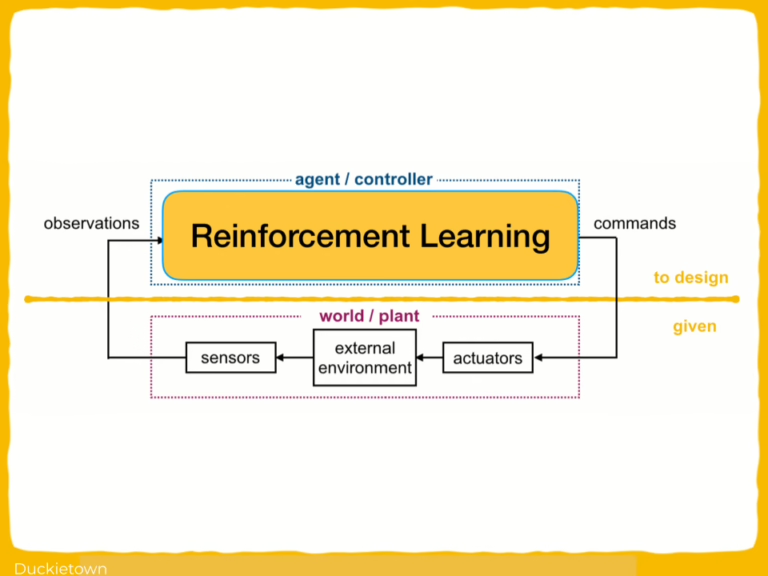
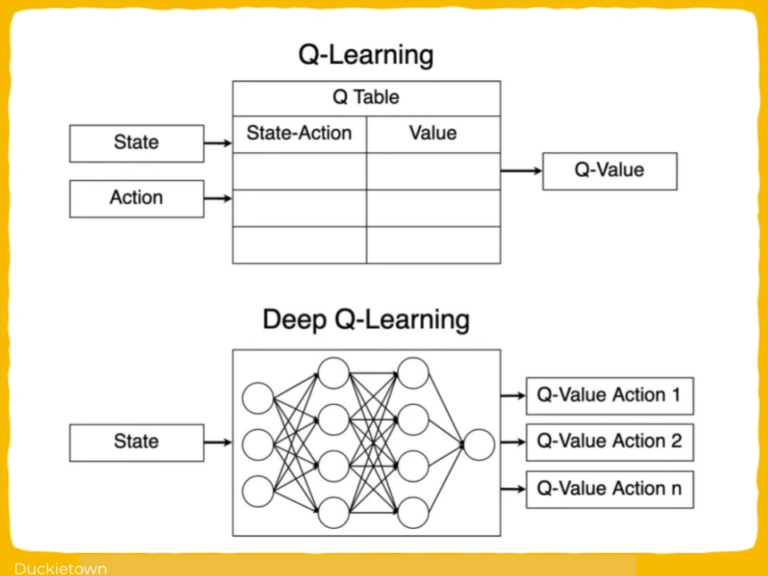
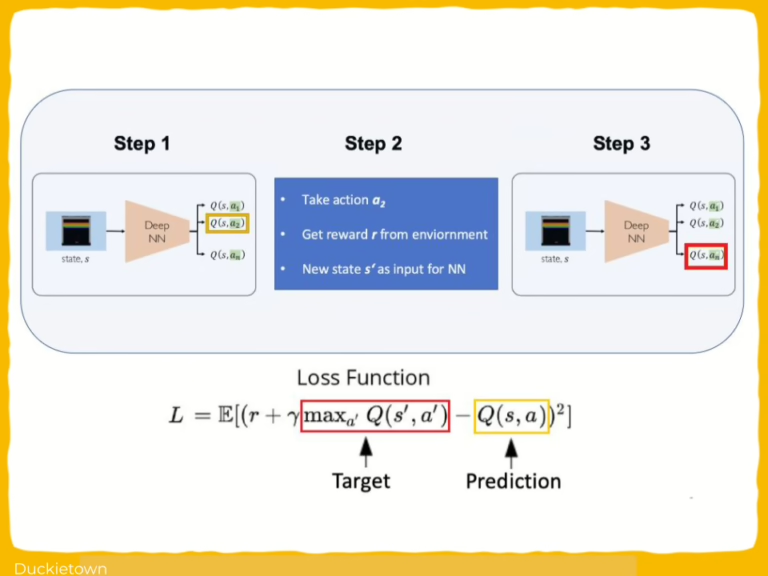
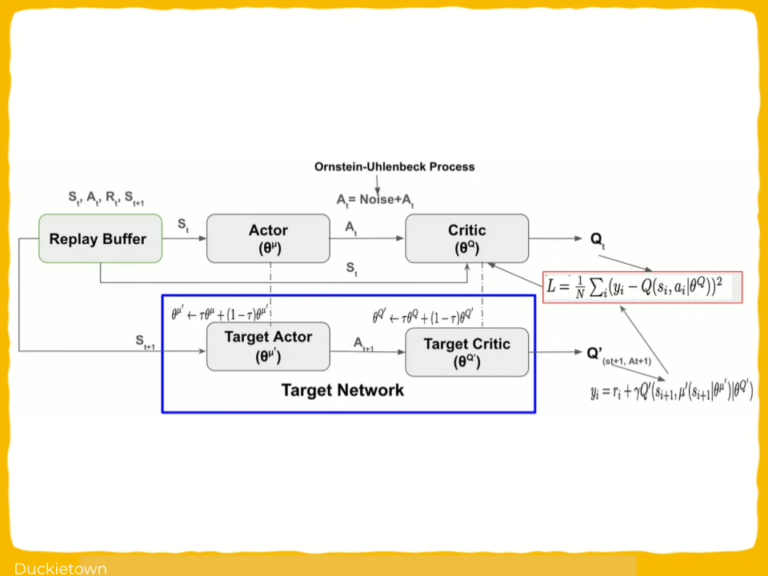
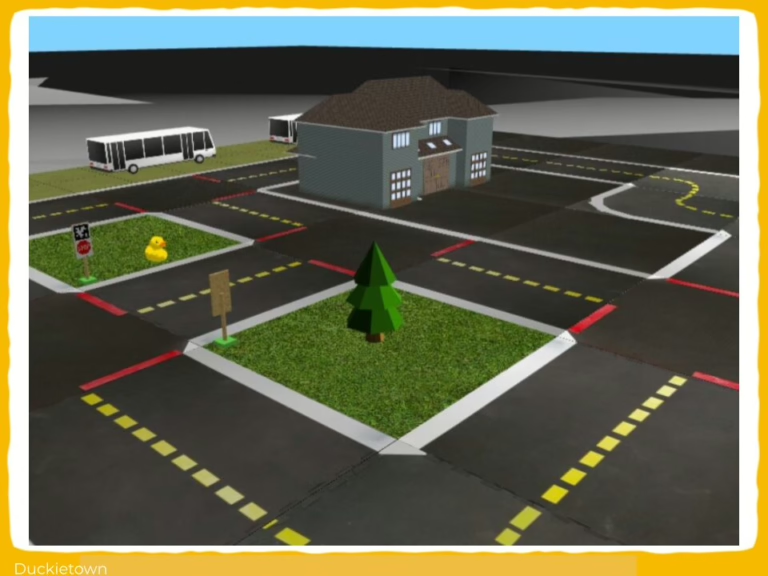
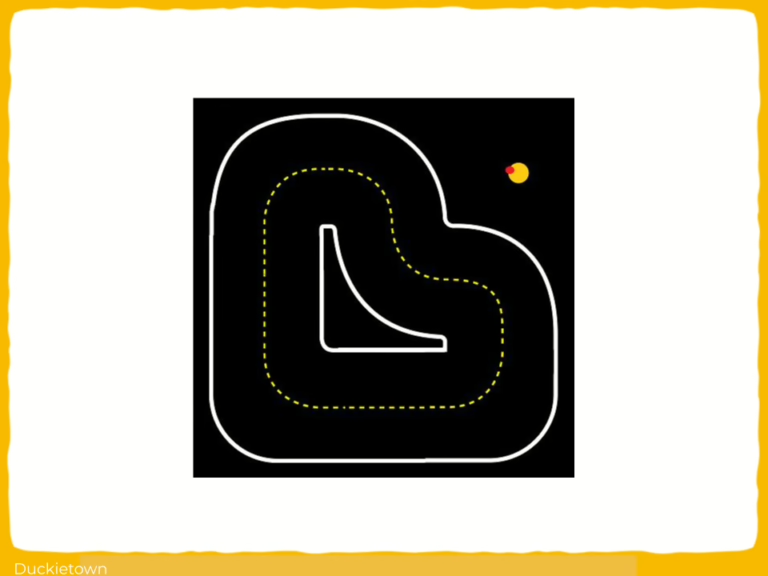
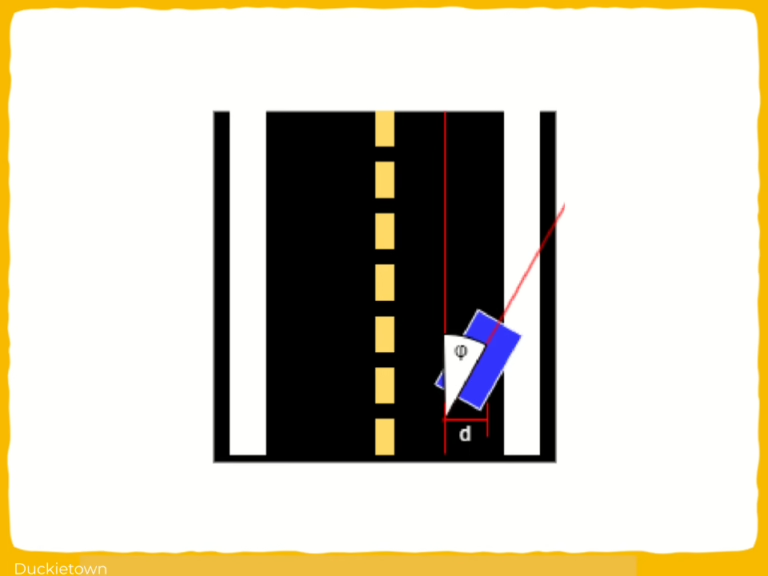
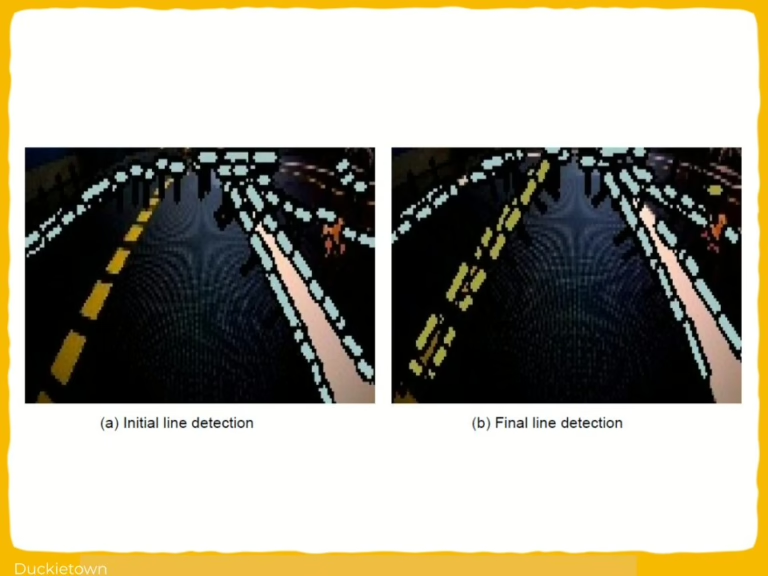
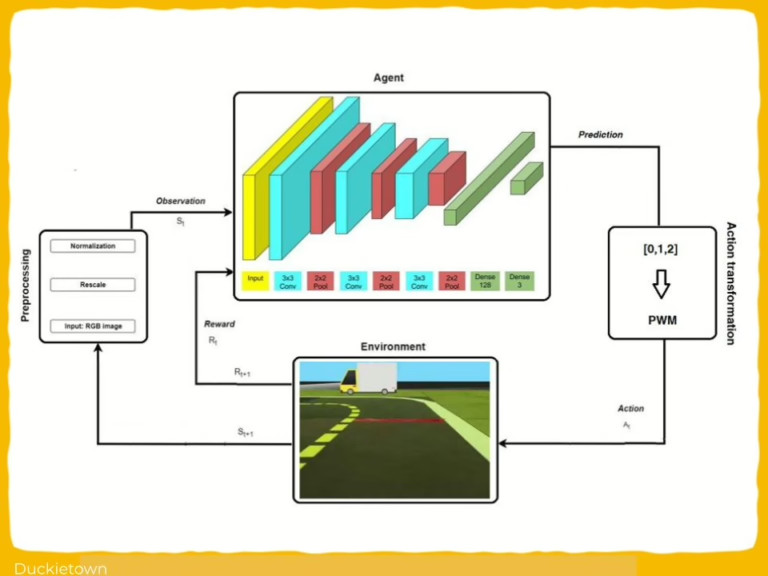



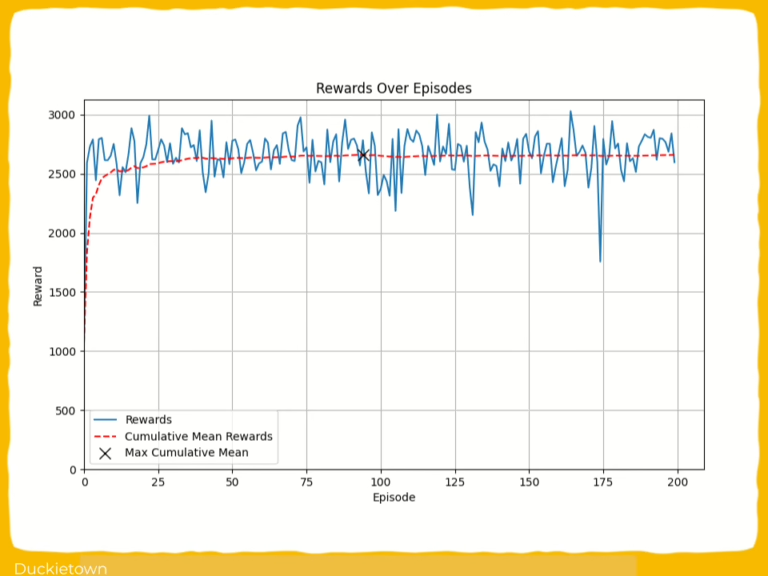
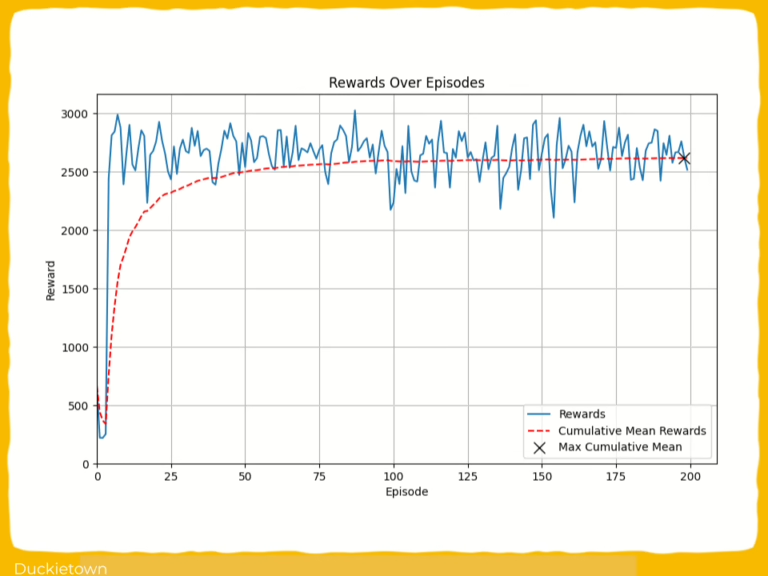
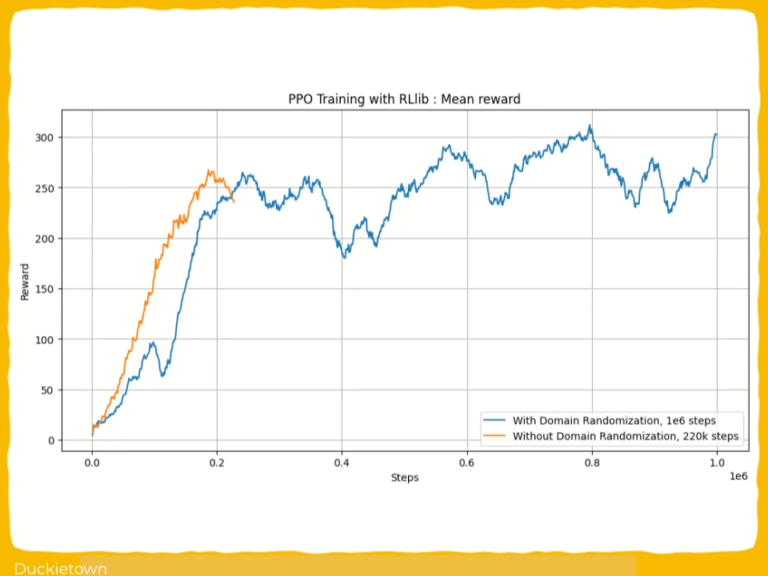
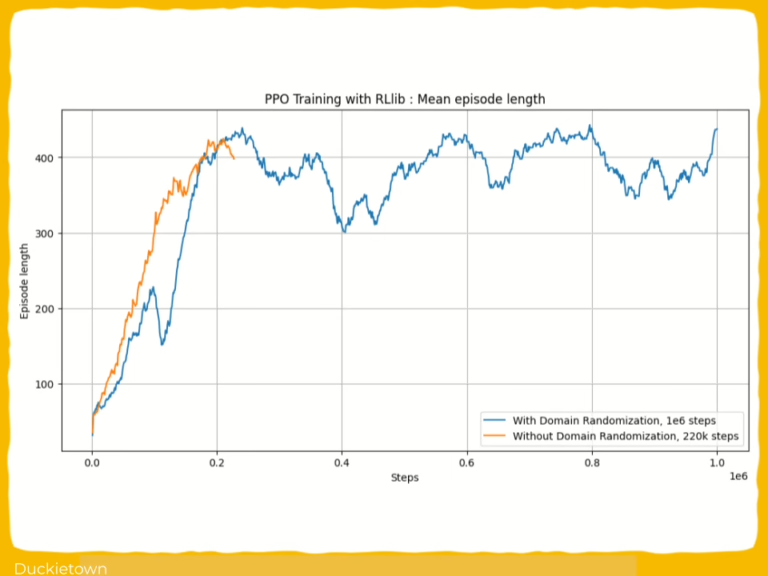
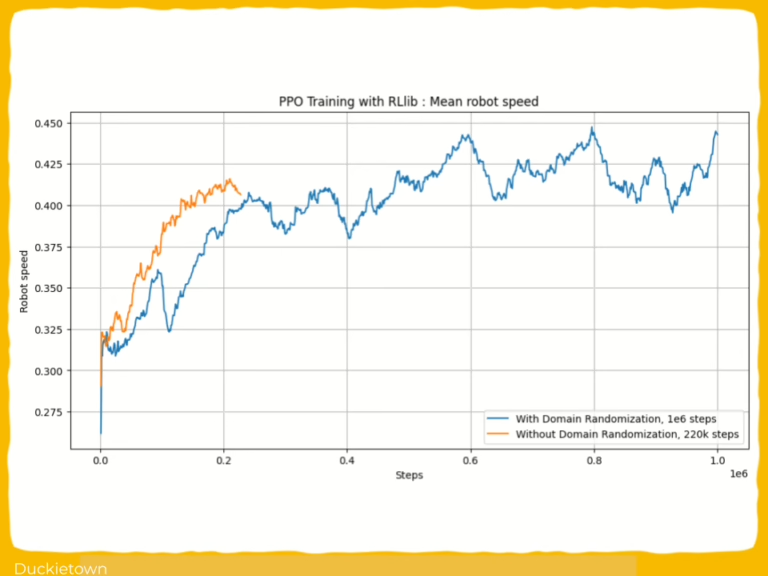
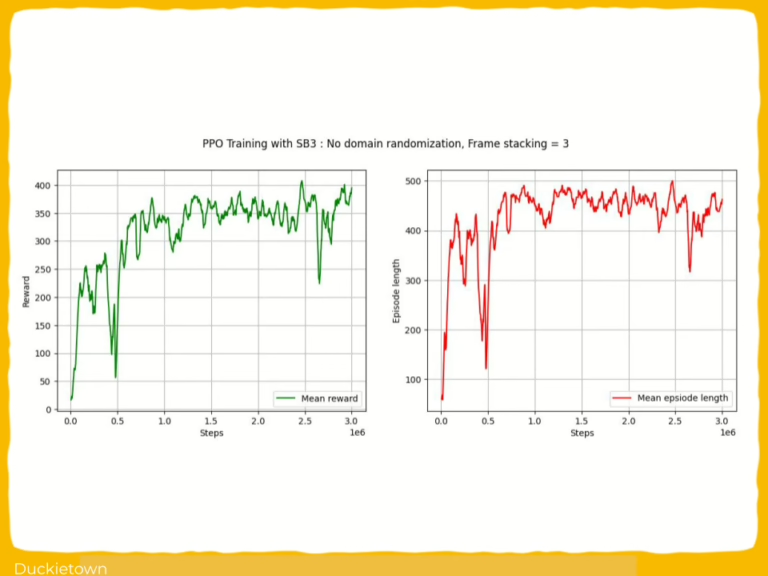
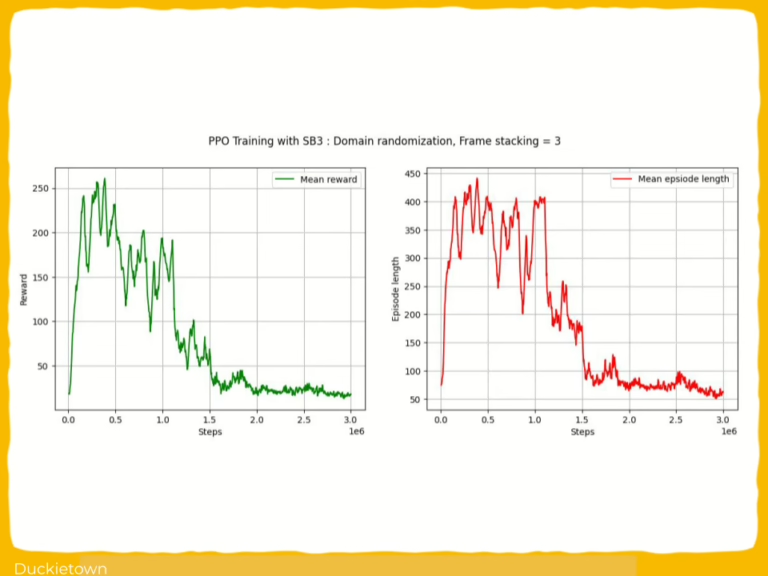


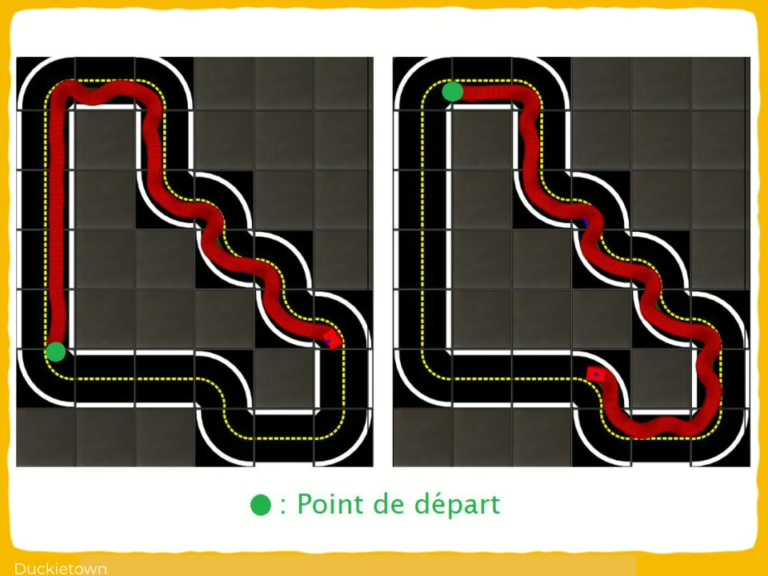
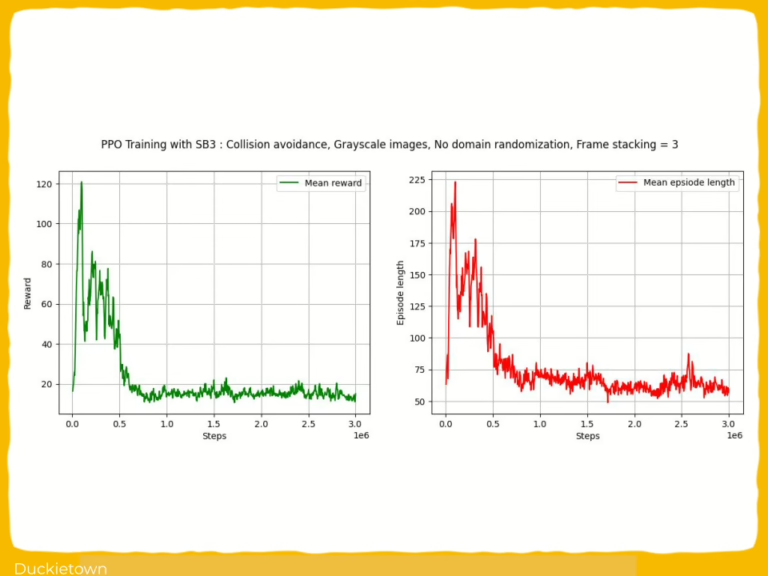
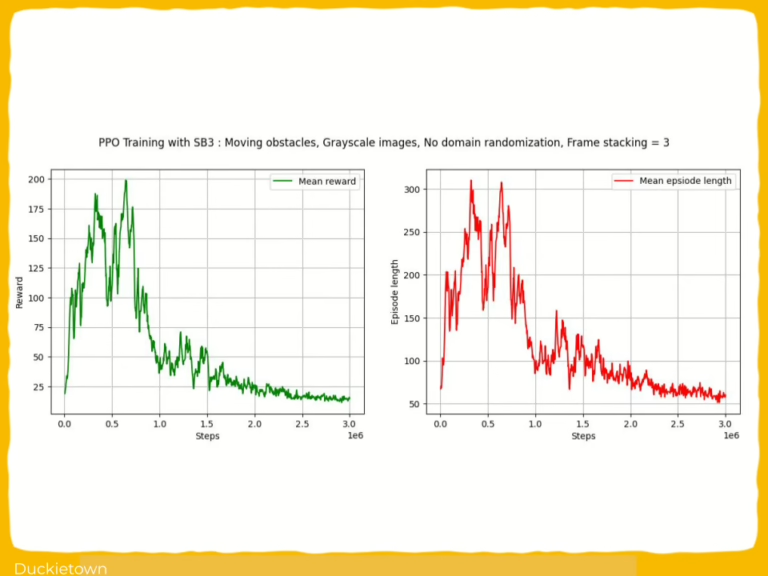

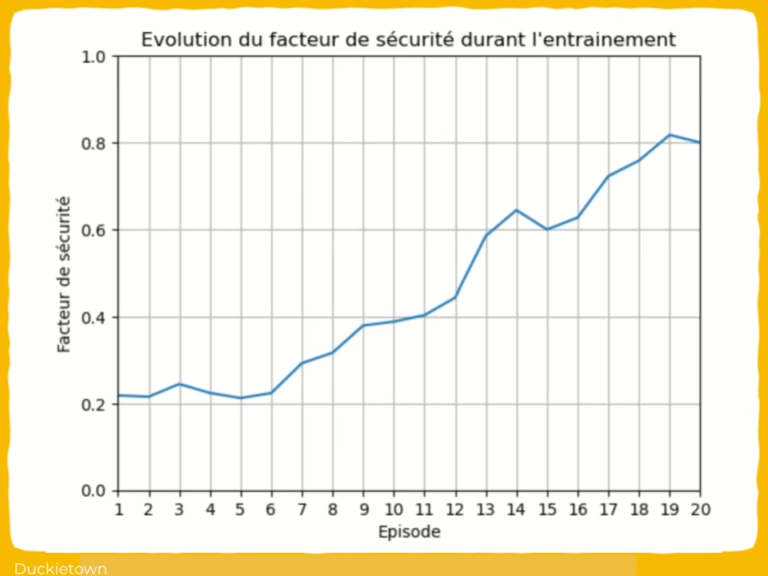
Why reinforcement learning for the control of Duckiebots in Duckietown?
This thesis explores the use of reinforcement learning (RL) techniques to enable autonomous navigation in the Duckietown. Reinforcement learning is a type of machine learning where an agent learns to make decisions by performing actions in an environment and receiving feedback through rewards or penalties. The goal is to maximize long-term rewards.
This work focuses on implementing and comparing various RL algorithms—specifically Deep Q-Network (DQN), Deep Deterministic Policy Gradient (DDPG), and Proximal Policy Optimization (PPO) – to analyze performance in autonomous navigation. RL enables agents to learn behaviors by interacting with their environment and adapting to dynamic conditions. The PPO model was found demonstrating smooth driving using grayscale images for enhanced computational efficiency.
Another feature of this project is the integration of YOLO v5, an object detection model, which allowed the Duckiebot to recognize and stop for obstacles, improving its safety capabilities. This integration of perception and RL enabled the Duckiebot not only to follow lanes but also to navigate autonomously, making ‘real-time’ adjustments based on its surroundings.
By transferring trained models from simulation to physical Duckiebots (Sim2Real), the thesis evaluates the feasibility of applying these models to real-world autonomous driving scenarios. This work showcases how reinforcement learning and object detection can be combined to advance the development of safe, autonomous navigation systems, providing insights that could eventually be adapted for full-scale vehicles.
Reinforcement learning for the control of Duckiebots in Duckietown - the challenges
Implementing reinforcement learning, in this project faced a number of challeneges summarized below –
- Transfer from Simulation to Reality (Sim2Real): Models trained in simulations often encountered difficulties when applied to real-world Duckiebots, requiring adjustments for accurate and stable performance.
- Computational Constraints: Limited processing power on the Duckiebots made it challenging to run complex RL models and object detection algorithms simultaneously.
- Stability and Safety of Learning Models: Guaranteeing that the Duckiebot’s actions were safe and did not lead to erratic behaviors or collisions required fine-tuning and extensive testing of the RL algorithms.
- Obstacle Detection and Avoidance: Integrating YOLO v5 for obstacle detection posed challenges in ensuring smooth integration with RL, as both systems needed to work harmoniously for obstacle avoidance.
These challenges were addressed through algorithm optimization, iterative model testing, and adjustments to the hyperparameters.
Reinforcement learning for the control of Duckiebots in Duckietown: Results
Reinforcement learning for the control of Duckiebots in Duckietown: Authors
Bruno Fournier is currently pursuing Master of Science in Engineering, Data Science at the HES-SO Haute école spécialisée de Suisse occidentale, Switzerland.
Sébastien Biner is currently pursuing Bachelor of Science in Automotive and Vehicle Technology at the Berner Fachhochschule BFH, Switzerland.
Learn more
Duckietown is a modular, customizable and state-of-the-art platform for creating and disseminating robotics and AI learning experiences.
It is designed to teach, learn, and do research: from exploring the fundamentals of computer science and automation to pushing the boundaries of knowledge.

